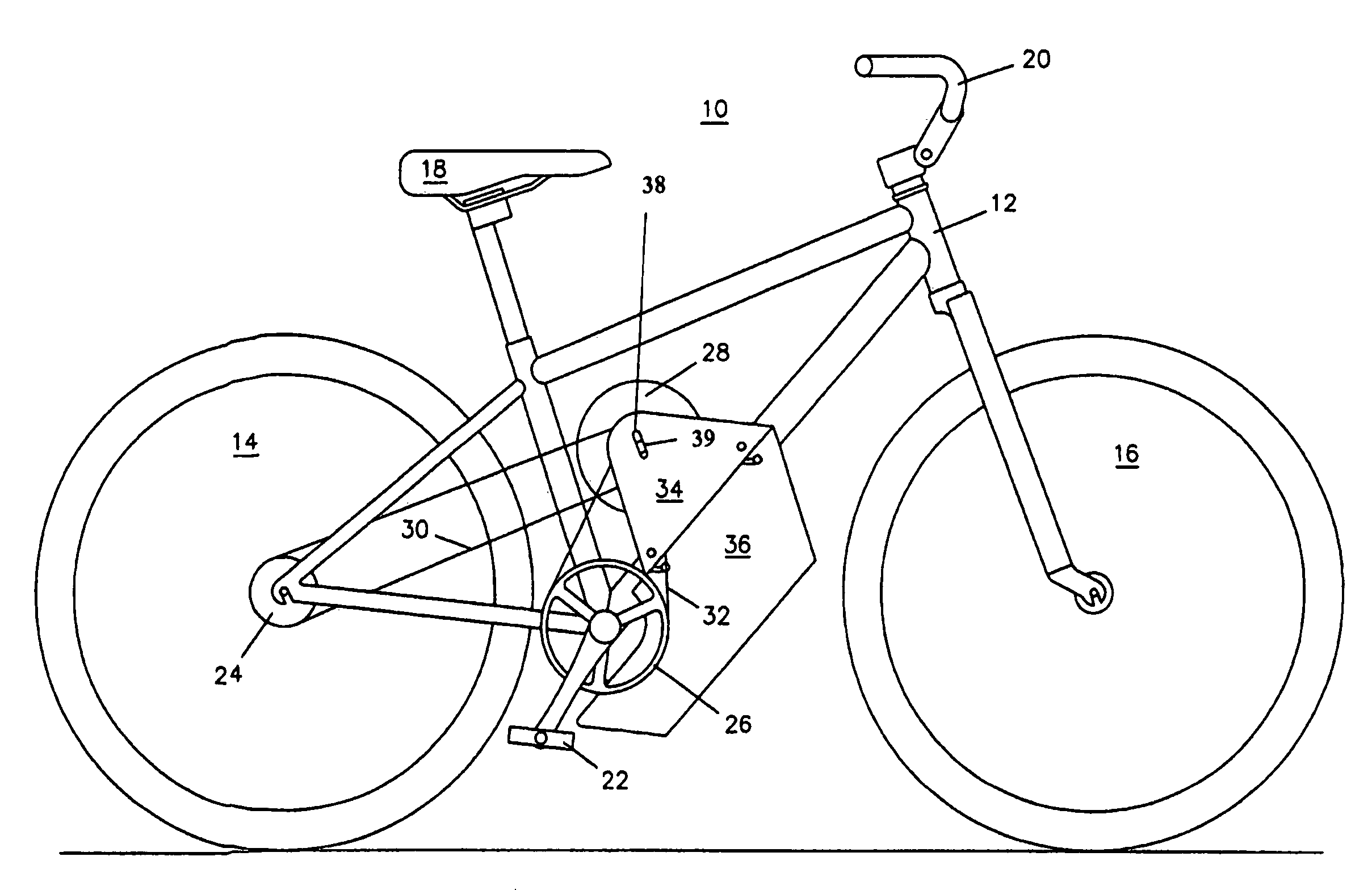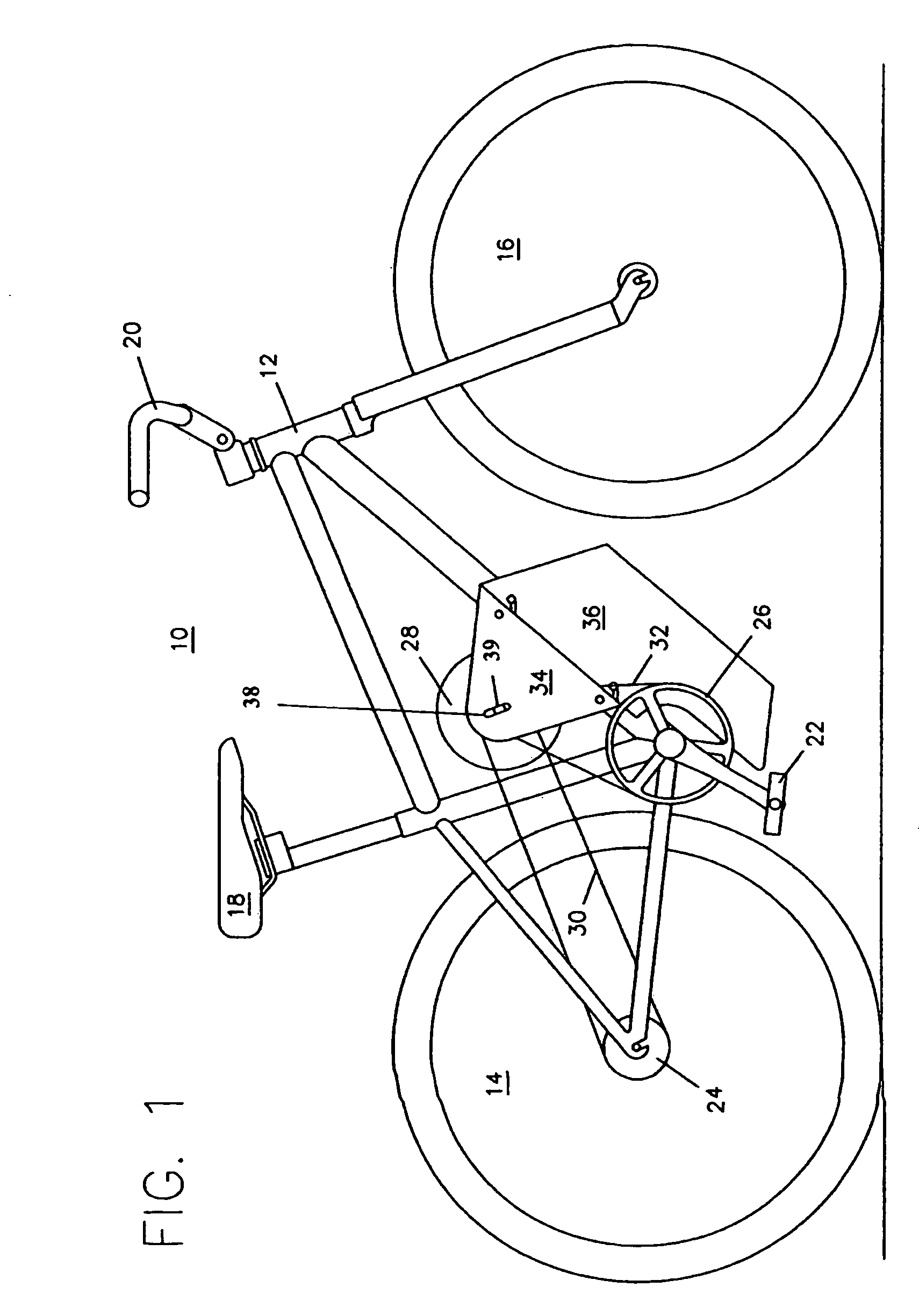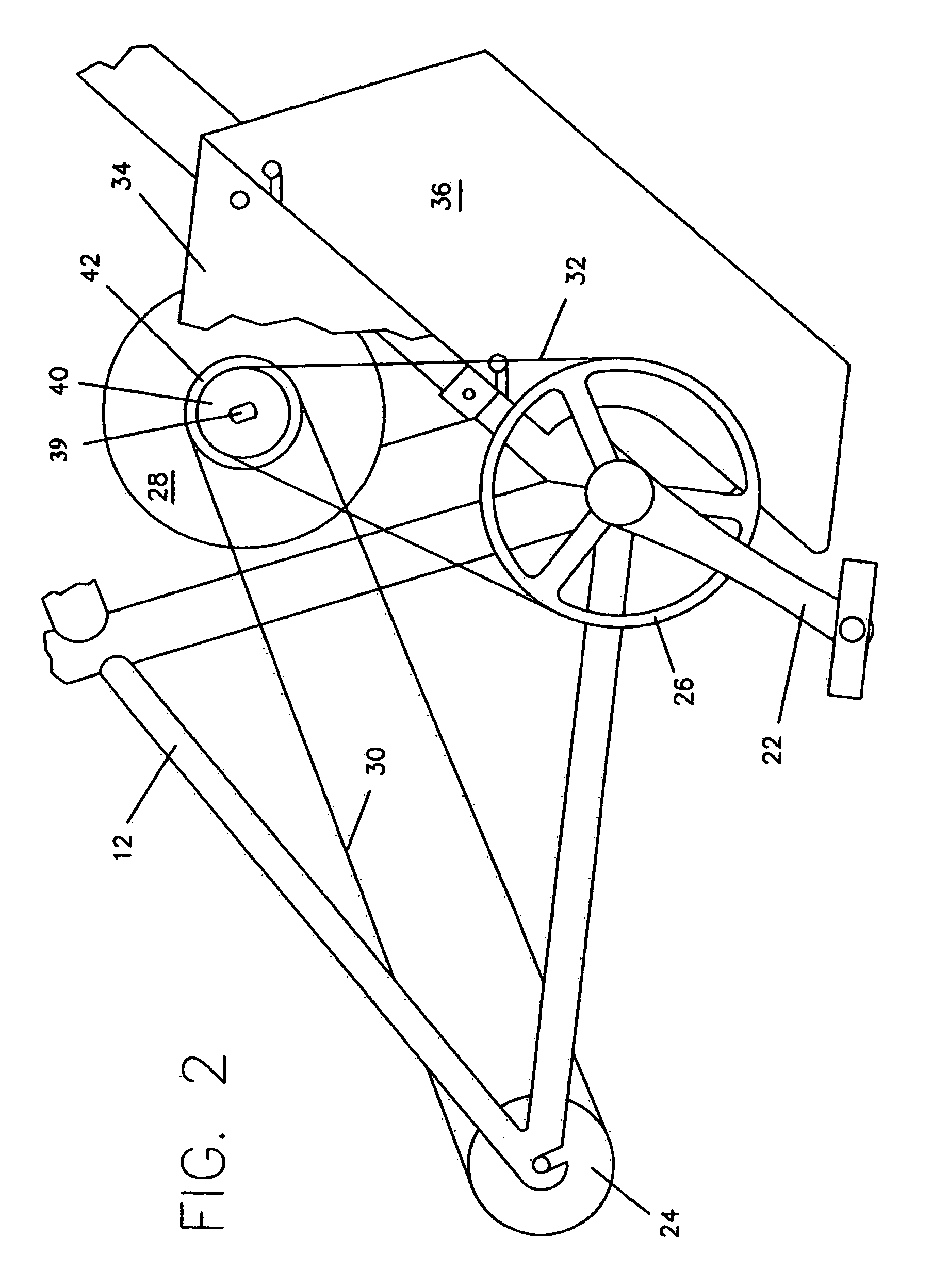Electric bicycle
a technology of electric bicycles and pedal shafts, applied in the direction of electric propulsion mounting, bicycles, transportation and packaging, etc., can solve the problems of increasing costs, increasing costs, and increasing the cost, and achieve the effect of easing pedaling
- Summary
- Abstract
- Description
- Claims
- Application Information
AI Technical Summary
Benefits of technology
Problems solved by technology
Method used
Image
Examples
Embodiment Construction
[0041]Referring to FIG. 1, an electric powered bicycle 10 of the present invention preferably includes a frame and fork assembly 12, a front wheel assembly 16, a rear wheel assembly 14, a seat assembly 18, a handle bar assembly 20, a front and rear brake assembly (not shown), a pedal crank assembly 22, a multi-speed rear hub assembly 24, a pedal sprocket 26, a hub motor assembly 28, a hub motor axle 39, a drive chain 30, a pedal chain 32, a motor support bracket 34, and a battery module 36. The battery module 36 is mounted to the frame 12 in a way that makes it easy to remove in the forward direction and easy to replace in the reverse direction. The battery module 36 fits between sprocket 26 and the left side of pedal crank assembly 22 at a position no lower (closer to the ground) than pedal 22 at its lowest position.
[0042]Motor 28 was designed as a bicycle hub motor and, therefore, the outer case turns while the axle 39 remains fixed. Bracket 34 is mounted to frame 12 and supports ...
PUM
 Login to View More
Login to View More Abstract
Description
Claims
Application Information
 Login to View More
Login to View More - R&D
- Intellectual Property
- Life Sciences
- Materials
- Tech Scout
- Unparalleled Data Quality
- Higher Quality Content
- 60% Fewer Hallucinations
Browse by: Latest US Patents, China's latest patents, Technical Efficacy Thesaurus, Application Domain, Technology Topic, Popular Technical Reports.
© 2025 PatSnap. All rights reserved.Legal|Privacy policy|Modern Slavery Act Transparency Statement|Sitemap|About US| Contact US: help@patsnap.com



